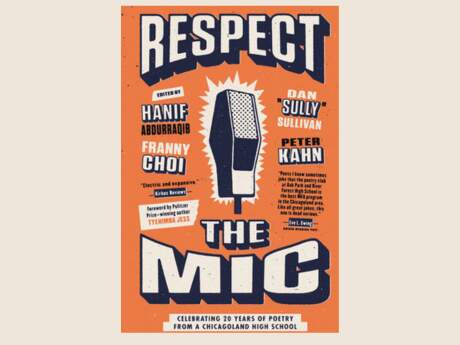On Poetry
On Beauty: Charles Altieri

Beauty and Her Rivals
In the current condition of the academy, "beauty" appears to have attained the currency that "power" possessed in the 1980s. Indeed, the very appeal that "beauty" now has may be directly related to the cache that "power" had then. Since political and sociological approaches to the arts seem to have outlasted their welcome, it has become important to develop alternatives more closely attuned to what artists and writers think they are doing in their work, as well as to what audiences have traditionally expected from such work. Concepts of beauty seem to meet this demand because they focus attention on at least three basic features of the imaginative energies articulated by writers and artists that have proved resistant to the sociological gaze. First, they remind us that art-objects have claims upon us because of what is singular and excessive in their ways of appearing. They also remind us of beliefs that attentiveness to this singularity and excessiveness can modify our understanding of our needs and powers as subjects. Finally, thinking about beauty helps preserve a melancholy but also potentially ecstatic distance between the states that art-objects make possible and the rhetorics we employ to interpret those states.
However beauty's conceptual promise has proven very difficult to realize. Beauty is burdened with too much baggage from its metaphysical childhood. Thinkers face what may be an inescapable gulf between the abstractness of the concept and the concreteness that it is intended to preserve. It ought to be no surprise then that most current uses of the concept of beauty fail aesthetic objects because they are insufficiently discriminating. It is too easy to speak of beauty without looking carefully at the distinctive modes of attention, self-reflection and expression that specific objects make available. And beauty, as a concept, fails subjects because it tends to cast the subject either as pure perceiver or as experiencing the sense of subjective universality that for Kant enabled beauty to be a symbol of the moral good. Stressing beauty makes it very difficult to specify how works and moments call audiences to the self-reflexive enjoyment of distinctive imaginative powers and forms of desire basic to establishing possible senses of our own capacities and commitments. Finally, if that were not enough, proponents of the beautiful as the carrier of moral force have to come to terms with two further sociological problems. At one pole beauty-talk has a history of providing social capital, so that rather than trying to establish what is distinctive in a given artwork's claim on us, we are tempted to preen over what is distinctive in us that makes us so sensitive to beauty. At the other pole the universalizing aspect of our theorizing about beauty has the tendency to invite philosophical accounts that replace the authority we might attribute to aesthetic experience with the authority earned by abstract arguments. As Jacques Derrida has shown brilliantly in his writings on Kant, this tendency leads us to rely on concepts and moralizing ambitions that ultimately occlude everything that is violent or fantastic or disruptive or amorally ecstatic in art. Because talk about beauty tends to stress only those aspects of the subject that either revel in discriminating sensibility or find justification in their proximity to moral discourses, I suspect that efforts to make artworks and art audiences into good citizens risk losing everything that makes them interesting and challenging ones. Conversely, the richer our attention to distinctive and affectively engaging particularity characteristic of strong aesthetic experience the harder it is to subsume aesthetic to moral concerns. For then the values that stand out involve intensities and delights and excesses and even refusals of moral reasoning grounded in how individual performative states take on definition.
I have to hope that one example will serve to indicate how deep and widespread the problems are with contemporary claims for beauty. So I will turn to a representative moment in Elaine Scarry's On Beauty and Being Just, which is perhaps the boldest recent attempt to dignify beauty by correlating it with truth and moral practice. I cannot but applaud Scarry's overall project, because she frames her case by developing a devastating critique of efforts to reduce the arts to socio-political frameworks. But the confidence generated by these successful critiques has substantial drawbacks. Many of Scarry's positive assertions seem to me problematic. And, given the possibility now of fostering a criticism devoted to values immanent in artworks, it seems to me crucial that we be very careful to get some distance from those aspects of her case that risk making talk about the arts even more vulnerable than it has been to attitudes skeptical of any kind of idealizations about the values they promulgate. Here I will concentrate on generating that distance from two particular weaknesses in her arguments. First, Scarry's book is a very good example of the deleterious effects of beauty's metaphysical roots, since she gathers into one undivided category the beauty of natural phenomena, art-objects, persons, scientific explanations and debates, without defining beauty or explicitly Platonizing it. The second is a close corollary: Scarry is so eager to connect her observations about beauty to assertions about truth and moral goodness that she does not pay sufficient attention to other more dynamic and less abstract ways that the values realized in the works may in fact modify how we live our lives.
The moment I want to examine is Scarry's treatment of the scene in The Odyssey in which Odysseus emerges from the bushes to make himself manifest to Nausicaa. For Scarry the scene illustrates how standing "in the presence of beauty" produces for Odysseus a "sense of being without precedent" that in turn conveys "a sense of the 'newness' or 'newbornness' of the entire world"1:
But if you are one of the mortals living here on earth,
three times blest are your father, your queenly mother,
three times over your brothers too. How often their hearts
must warm with joy to see you striding into the dances—
such a bloom of beauty [...]
I never laid eyes on anyone like you,
neither man nor woman [...]
I look at you and a sense of wonder takes me. Wait,
once I saw the like—in Delos, beside Apollo's altar—
the young slip of a palm-tree springing into the light.
Then, I'd sailed, you see with a great army in my wake
out on the long campaign that doomed my life to hardship.
That vision, just as I stood there gazing, rapt for hours [...]
no shaft like that had ever risen up from the earth—
so now I marvel at you, my lady: rapt, enthralled,
too struck with awe to grasp you by the knees
though pain has grounded me down.2
Scarry wants us to see first how beauty astonishes, then how the work of comparison manages to "magnify rather than diminish, his statement of regard for Nausicaa, letting the 'young slip of palm-tree springing into the light' clarify and verify her beauty" (23). Ultimately the passage exemplifies three features of beauty: that it is sacred, that it is "unprecedented" and that it is "lifesaving," at least figuratively because all of this emerges just after Odysseus has escaped death, now to emerge into a profound sense of the possibility of being welcomed.
Scarry is no fool. She knows that Odysseus is also being "relentlessly strategic" in his effort to have Nausicaa "lead him to safety." But she is perhaps too much like an eager Nausicaa in not being sufficiently suspicious of Odysseus, and hence also in not being sufficiently attuned to what is truly distinctive and aesthetically compelling in Odysseus himself. For Scarry there is a simple choice: "Just as his hymn to beauty can be seen as an element subordinate to the larger frame of his calculation for reentering the human community, so the narrative of calculation can be seen as subordinate to the hymn of beauty" (27). And then she goes on to several pages of hymning about the importance of treating beauty not as "life-threatening" but as "life-affirming, life-giving." Yet all of this praise seems to me to miss Homer's basic concern. Beauty is a topic invoked, but all the energy resides in the "larger frame" of Odysseus' "calculation" where we see how he puts the various topoi to work. Homer wants us to participate imaginatively in this rhetorical effulgence (not to believe it) and he wants us to appreciate how such skills are part of one possible type of heroism. Critical talk about beauty simply will not be able to characterize what seems most at stake for the author or to clarify what an audience might realize in yielding itself to those authorial labors.
I find Scarry farthest from Homer's spirit when she ignores the fact that the shipwrecked Odysseus not only refers to palms but uses the fronds to cover his private parts. The material palms do more than beauty can to help the exile at least enter the possibility of human community. And her decision prevents her from exploring how the double use of palms provides a framework for reading the entire passage. If Odysseus is to get what he needs, he cannot be simply a detached appreciator of beautiful young things. He must use the rhetoric of praise to position Nausicaa so that she will be induced to lead him to her palace. Scarry understands this need, but she ignores the degree to which the need imposes demands on Odysseus that make it impossible for him to be simply an awestruck responder to beauty. Certainly Odysseus' rhetoric about the palm-tree invokes beauty's relation to precedents. But his primary reason for introducing the precedent is not to contextualize the beauty that he sees. Rather, it is to position the person with whom he is dealing. For Odysseus the important precedent is not one involving her beauty but one characterizing his suffering. He turns back to the past because he has to get his own situation into the foreground. He has to make it clear both that his has been a life of suffering and that beneath his apparent ignobility there rests a truly illustrious man.
I suspect that not even Nausicaa thinks that this rhetoric is more about her than it is about Odysseus' own situation, more about need than it is about beauty, and more focused on performance than on description. Scarry's academic moralizing response to this young woman may well deny her her own Odyssean intricacy. At the least it ignores the difficult position in which both Nausicaa and the reader find themselves. Is she just taken in by Odysseus' discourse—one more person seduced by the desire to believe in protestations about beauty? Or does she use the openings that his brilliant rhetoric affords to pursue what seems increasingly in her self-interest? Whichever alternative we choose, Scarry's case is in trouble. If Odysseus simply seduces Nausicaa by his rhetoric, then his assertions about beauty are in fact manipulative. Moreover, Homer clearly does not judge him for that abuse. The text is much less interested in moralizing through Odysseus that it is in admiring him for his ability not to be bound by the finery of morality and of truth. He has a wife to return to, a kingdom to run, and perhaps above all a character to exercise in all its amoral fullness. If, on the other hand, Nausicaa is not seduced by Odysseus' praise but by his abilities as a rhetor (as well as by his manhood in other respects), then we have a substantial adult exchange of values. But beauty plays a very small part in that exchange, unless one claims that it is the rhetoric that is really beautiful. And in that case why use so abstract a term of praise when one can get much closer to the values that the rhetoric embodies for the characters by talking about inventiveness and pointedness and responsiveness to context and an amazing ability to delight in himself even under such trying circumstances?
There seems so much suppressed by Scarry's analysis that I am tempted to counter her "three features about beauty" with three assertions about how the aesthetic experience of this passage requires dispositions of energies that no theory of beauty can either generate or direct. I address my case specifically to the appreciation of artworks but I think it also applies to some extent in relation to the non-artifactual presences that Kant called "natural beauty." The first two assertions are closely linked. First, it is crucial not to be seduced by beauty's promise of self-evident satisfactions. Full aesthetic experience of most situations requires interpretive efforts to contextualize those satisfactions, as Homer does in his focus on Odyssean performance (and as Joyce does when he renders a responsiveness to the beauty of Nausicaa that escapes Scarry's idealizing nets). Second, once we do stress contextualized performance, by artist and by characters, we have a locus for the multiplicity and the many forms of excess in relation to reason that I think art keeps possible in the face of society's constant efforts to impose standards based on versions of prudential or normative judgment. Aesthetic experience is the provisional enactment of states of intensity made possible by how particulars are composed.
My third assertion generalizes about the values embodied in such performances when they are appreciated for their particularity. Art matters because it guides us in engaging particulars under the rubric of slow time and careful attention—to the object and to what happens to us as audiences in the time and the imaginative space that the object composes. Such engagement does not require any feelings of duty or desires that our actions will somehow provide us with an improved position in some actual marketplace. We respond most fully to Homer's Nausicaa passage when we allow ourselves to explore as possible idealizations of human possibilities the ways that the agents perform and display their own powers in relation to the discourse of beauty. For the time of our reading, moral judgment seems a disturbingly dull instrument when compared with Odysseus' brilliantly condensed exercise of intelligence and energy.
There is then an obvious final moral to my tale. The very energies that emerge as we feel the idealizing force within artworks have to be accepted as in constant tension with our desires for morally satisfying reflective attitudes and the forms of motivation that they encourage. One crucial social role of aesthetic experience may be its capacity to remind us of just how ordinary we are on most of the occasions when we have to decide what judgments can be defended in the public sphere. Moral thinking must always go in fear of virtuoso performance if it is to have force as something other than a statement of interests: too accomplished an appeal to universals will make the particular investment seem inordinate and hence suspicious. So there is something deeply wrongheaded about presenting the aesthetic as if it were supplemented by the discourses linking it to the ethical and the moral. Our richest experiences of the aesthetic in fact invite us to dwell in moments where we are more interested in appreciating human powers as manifest energies than we are in judging how they might be applied in practical circumstances. Rather than subordinate such moments to the workings of moral reflection, critics and theorists in the arts should trust the example of Odysseus. One finds one's way into the minds and bodies of a public most powerfully if one can stand before them only minimally embarrassed by having just a palm frond with which to cover one's always already rhetoricized nakedness.
Notes
1 Scarry's references to Homer's The Odyssey are taken from Robert Fagles' translation (1996). The ellipses in the passage are Scarry's.
2 Elaine Scarry, On Beauty and Being Just (Princeton University Press, 1999), p.20.
--Originally published in Crossroads, Spring 2001.



